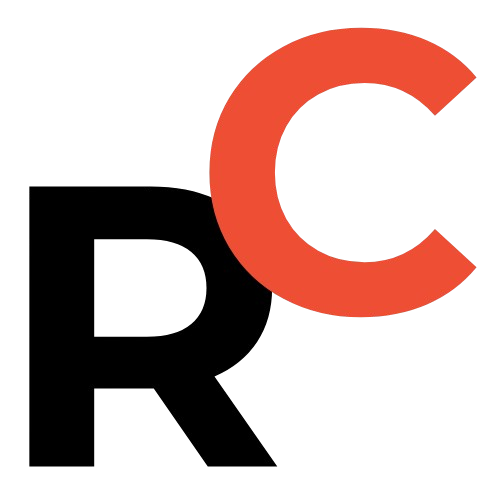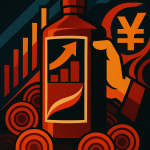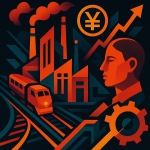Key Points
- Chinese Star Fund Managers Pivot to Pharma: Top fund managers like Fu Pengbo (傅鹏博) and Gao Nan (高楠) are significantly increasing their allocation to the innovative drug sector, signaling a major investment trend.
- Fu Pengbo’s Counter-Cyclical Bet: Fu Pengbo, managing a ¥18.666 billion RMB ($2.57 billion USD) portfolio, increased pharmaceutical holdings, particularly innovative drugs, as a counter-cyclical strategy amidst export chain impacts.
- Gao Nan’s Portfolio Overhaul: Gao Nan, overseeing ¥15.326 billion RMB ($2.11 billion USD), made aggressive moves, adding six new companies to his top ten holdings, focusing on TMT, innovative drugs, and new consumption, while exiting major names like BYD (比亚迪).
- “Necessity” of Innovative Drugs: Chinese fund managers view the growth of innovative drugs not as an “option” but a “necessity,” driven by factors like information transparency, highly efficient R&D, lower operating costs, and massive clinical resources.
- Key Trends for Q3: Investors should watch for continued overseas licensing deals by Chinese innovative drug companies and monitor domestic sales growth through quarterly reports.

As Q2 2025 earnings reports drop, we’re getting a fascinating look inside the portfolios of China’s top fund managers, and one trend is impossible to ignore: a major pivot into the pharmaceutical sector.
The innovative drug space has been on a tear this year.
Now, seasoned vets like Fu Pengbo (傅鹏博) of Ruiyuan Fund and Gao Nan (高楠) of Yongying Fund are doubling down, signaling a major shift in where the smart money is flowing.
While the long-term outlook for innovative drugs looks solid, the sector has seen huge gains recently.
Expect some bumps and adjustments along the way.
Let’s break down the moves.
Fu Pengbo’s Ruiyuan Fund: A Counter-Cyclical Bet on Pharma & Exports
Fu Pengbo (傅鹏博), co-managing the Ruiyuan Growth Value (Ruiyuan Chengzhang JiaZhi 睿远成长价值) fund, is overseeing a massive ¥18.666 billion RMB ($2.57 billion USD) portfolio.
In Q2, the fund kept its foot on the gas with high equity exposure, focusing on:
- Electronics
- Internet Technology
- Precision Manufacturing
- And, you guessed it, Pharmaceuticals
Over 92% of the fund’s assets were in equities at the end of the quarter.
Here’s a look at their top ten holdings:
- Shenghong Technology (Shenghong Keji 胜宏科技)
- Tencent Holdings (Tengxun Konggu 腾讯控股)
- CATL (Ningde Shidai 宁de 时代)
- China Mobile (Zhongguo Yidong 中国移动)
- Luxshare Precision (Lixun Jingmi 立讯精密)
- Eswin Science and Technology (Xin Yi Sheng 新易盛) – New Addition
- Cambricon (Hanwuji 寒武纪)
- Great Star Technology (Juxing Keji 巨星科技)
- Sinocare (San Nuo Shengwu 三诺生物)
- Maysun (Maiwei Gufen 迈为股份)
Notably, Guanghui Energy (Guanghui Nengyuan 广汇能源) was dropped from the top ten to make room for Eswin Science and Technology.
Fu Pengbo explained the strategy in his Q2 report:
“Against the backdrop of a brief impact on export chains, we counter-cyclically increased our holdings in relevant companies.”
They also increased their allocation to the pharmaceutical sector, specifically targeting innovative drugs and traditional medicine that are getting a boost from advancements in AI.
Looking ahead, Fu says the fund will use upcoming interim reports to find companies with improving prospects and will maintain a balanced allocation to control drawdowns.

Find Top Talent on China's Leading Networks
- Post Across China's Job Sites from $299 / role
- Qualified Applicant Bundles
- One Central Candidate Hub
Your First Job Post Use Checkout Code 'Fresh20'

Gao Nan’s Yongying Fund: A Major Shift to TMT and Innovative Drugs
Gao Nan (高楠) is another heavy hitter, managing eight funds with a total AUM of ¥15.326 billion RMB ($2.11 billion USD). That’s a nearly 30% jump from Q1’s ¥11.841 billion RMB ($1.63 billion USD).
His funds are heavily concentrated in three key areas: TMT (Tech, Media, Telecom), Innovative Drugs, and New Consumption.
Let’s zoom in on his Yongying Ruixin (Yongying Ruixin 永赢睿信) fund, which grew by nearly ¥1.6 billion RMB ($0.22 billion USD) in Q2 alone.
The portfolio saw a major overhaul. Here are the top ten holdings:
- Pop Mart (Paopao Mate 泡泡玛特)
- Zhongji Innolight (Zhongji Xuchuang 中际旭创) – New Addition
- Alphamab Oncology (KANG Fang Shengwu 康方生物)
- Eswin Science and Technology (Xin Yi Sheng 新易盛) – New Addition
- Artigee (Jiangxin Jiaju 匠心家居)
- Innovent Biologics (Xinda Shengwu 信达生物) – New Addition
- Weichai Heavy Machinery (Weichai Zhongji 潍柴重机) – New Addition
- BeiGene (Baiji Shenzhou 百济神州)
- 3SBio (Sansheng Zhiyao 三生制药) – New Addition
- Zijin Mining (Zijin Kuangye 紫金矿业) – New Addition
Gao Nan’s team made aggressive moves, adding six new companies to the top ten while exiting names like BYD (Bi Yadi 比亚迪) and Ninebot (Jiuhua Gongsi 九号公司).
They also increased their positions in existing pharma holdings like Alphamab Oncology (KANG Fang Shengwu 康方生物) and BeiGene (Baiji Shenzhou 百济神州).
Gao stated that his stock selection focuses on a company’s growth potential and its ability to deliver on earnings.
The goal is to capture growth opportunities while minimizing industry concentration.

ExpatInvest China
Grow Your RMB in China:
- Invest Your RMB Locally
- Buy & Sell Online in CN¥
- No Lock-In Periods
- English Service & Data
- Start with Only ¥1,000

Why China’s Innovative Drug Sector Isn’t Just an Option—It’s a “Necessity”
So, what’s driving this huge push into innovative drugs?
According to Chu Kefan (储可凡) and Shan Lin (单林), fund managers at Yongying, this isn’t just a fleeting trend. They compare it to the explosive growth of the CXO (Contract Research Organization) sector back in 2018-2019.
It’s a “concentrated release of energy” after years of building the foundations.
Here’s why Chinese innovative drug companies are perfectly positioned to lead this new wave of internationalization:
- Information Transparency: Global pharma R&D is now a level playing field. The internet has eliminated information silos, so Chinese firms know exactly what global players are working on, which targets are hot, and what new patents are emerging.
- Efficiency & Resource Advantages: China boasts what they call “the most diligent scientific talent pool globally.” This, combined with high R&D efficiency, lower operating costs, and massive clinical resources, creates a powerful competitive edge. The CXO boom from 2018-2021 built out the entire ecosystem needed for success.
- Speed to Market: Thanks to these advantages, Chinese drug companies can achieve proof-of-concept (POC) faster. This means quicker commercial returns, which then fuels the R&D pipeline for the next generation of drugs.
The bottom line from these managers?
“The advancement of innovative drugs in China is not an ‘option’ but a ‘necessity.'”
They believe the industry is on the verge of releasing massive dividends. The winners will be companies with real “hard-tech” capabilities that create tangible clinical value.

Resume Captain
Your AI Career Toolkit:
- AI Resume Optimization
- Custom Cover Letters
- LinkedIn Profile Boost
- Interview Question Prep
- Salary Negotiation Agent

What to Watch for in Q3 and Beyond
Liang Furui (梁福睿) of Great Wall Medical Industry Select believes two key trends will dominate the innovative drug space in Q3:
- Overseas Licensing Deals: Expect this trend to continue. Chinese innovative drug companies are ahead of their overseas competitors on R&D progress for numerous targets. Big Pharma abroad needs to fill its pipelines, and Chinese firms are the obvious partners.
- Domestic Sales Growth: Keep an eye on quarterly reports and the results of medical insurance negotiations to see how domestic sales volumes are shaping up.
The message from the market is clear: the boom in China’s innovative drug sector is one of the most important investment stories of 2025.





